Clock rates
The clock looks pretty nice, though of course the power limit of 230 watts and the temperatures are the limiting factor. In Full-HD and without very heavy loads, even clock rates of 1695 to 1725 MHz are achieved for a short time, but this is a fair-weather boost without permanence. Fully warmed up and in Ultra HD, it’s still between 1425 and 1470 MHz, depending on the application and load. More is then simply no longer possible for temperature reasons. The GPU reaches the limit of 78 °C under permanent load, the hotspot is then already at 86 °C. The memory scrapes 90 °C, which is then also just under the limit for Tjunction in permanent use.
The clock naturally drops sharply as the GPU temperature rises, which can be seen beautifully in the relationship of the two curves of clock and GPU temperature to each other:
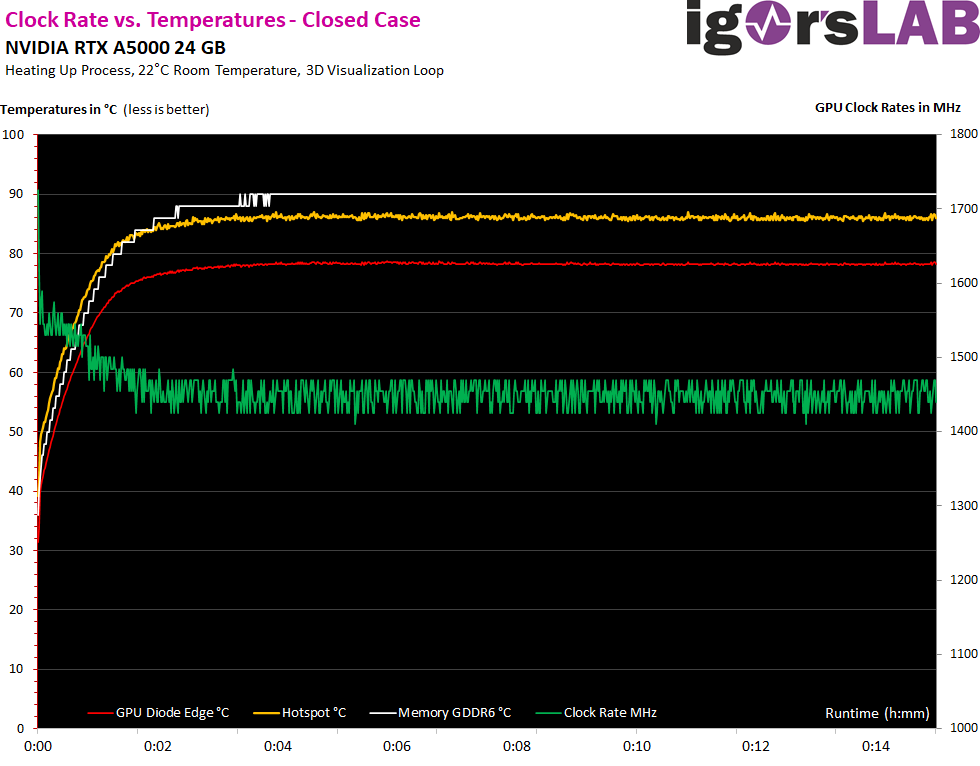
The circuit board is also very hot and unfortunately there is no back plate. Memory temperatures of around 90 °C are quite possible inside the chips, which already seems borderline.
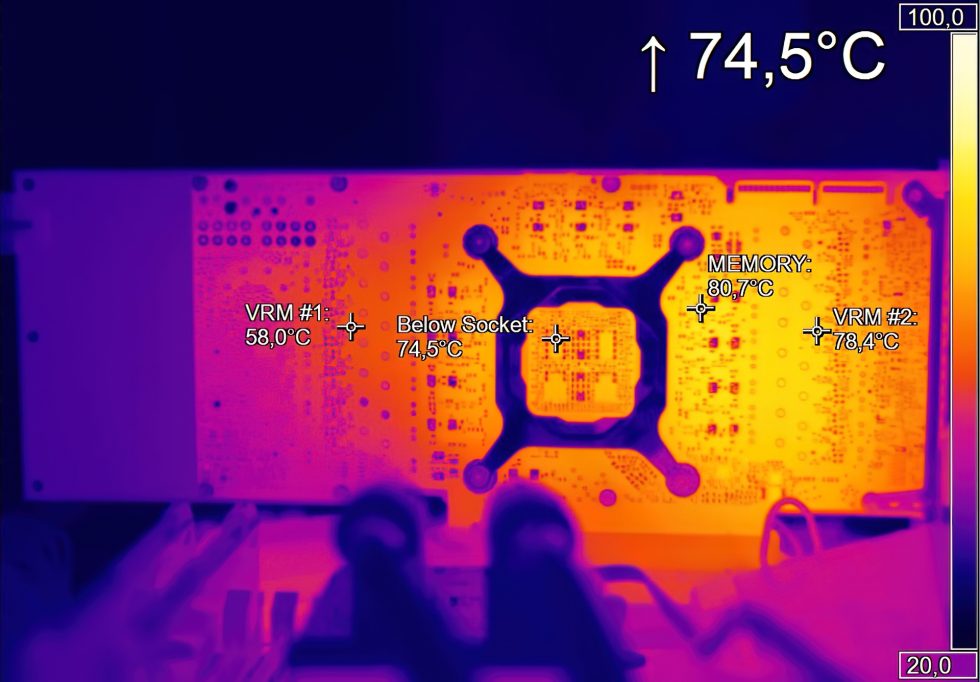
Fan control and curves
Cooling works only with a proper airflow and that’s exactly why I have now once looked at the fan curves. It goes from almost 1200 rpm in idle under permanent load up to just over 2000 rpm, which you can hear quite clearly. The card is only very quiet at half power and lower loads.
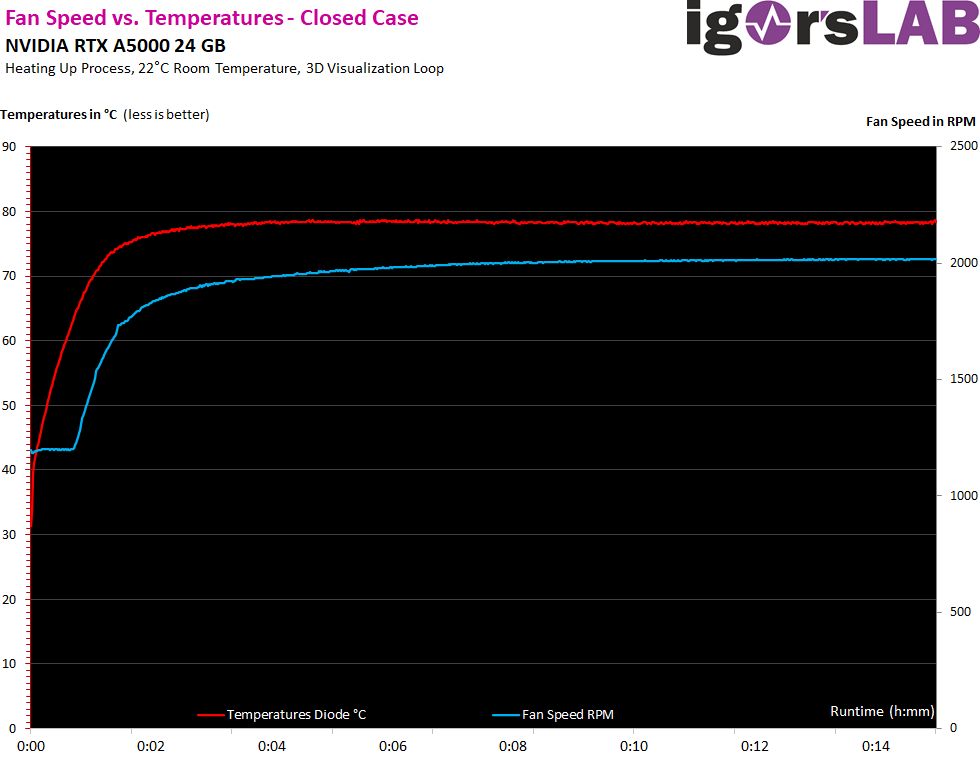
Noise emission “Volume
If you measure the whole thing in the 3D loop and the mentioned maximum of 230 watts, then the around 46 dB(A) are already very audible, but still a bit quieter than the Radeon Pro W6800. But at the end both levels are already not to be overheard. The advantage is that you can’t hear the possible buzzing of the coils, because everything is covered by the radial fan. So the nice Mr. Lorentz and his force named after him are swept acoustically under the carpet with a lot of wind.
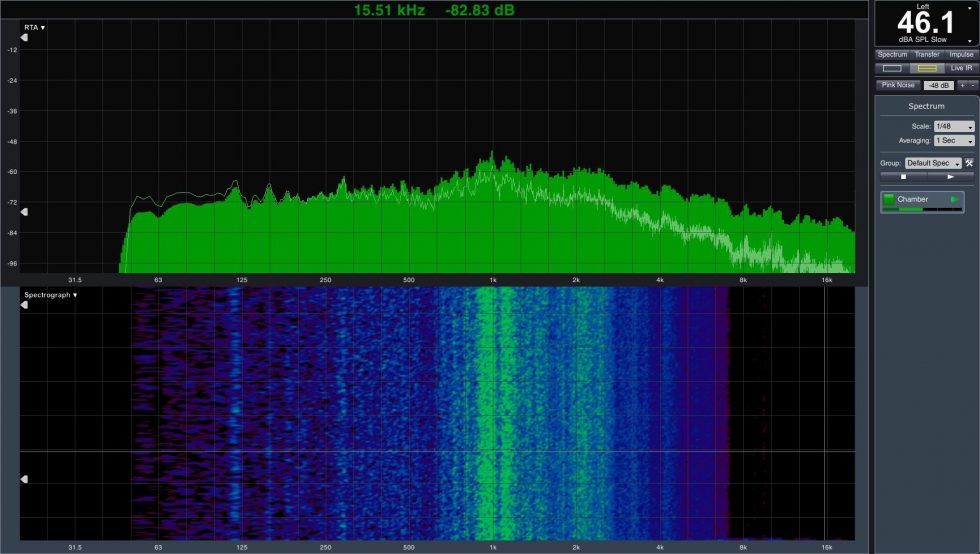
I documented how loud the whole thing is then with the recording as an audio file in the Chamber:
- 1 - Introduction and technical Data
- 2 - Test System and Methods
- 3 - Teardown: PCB and Cooler
- 4 - AutoCAD 2021
- 5 - Solidworks 2021 (No FSAA)
- 6 - Solidworks 2021 (FSAA Enabled)
- 7 - Inventor Pro 2021
- 8 - 3ds Max, Catia,Creo, Energy
- 9 - Maya, Medical, Siemens NC, SW 2017
- 10 - DirectX 11, DirectX 12, Vulkan, OpenGL und DXR
- 11 - AI und Compute
- 12 - Rendering
- 13 - Power Consumption, Limits and Standards
- 14 - Transients and PSU Recommendation
- 15 - Clock Rate, Temperatures, Fan Speed and Noise
- 16 - Conclusion and final Words

















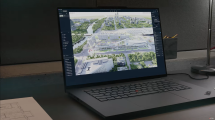
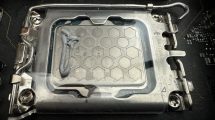

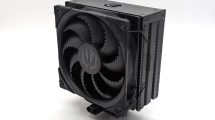



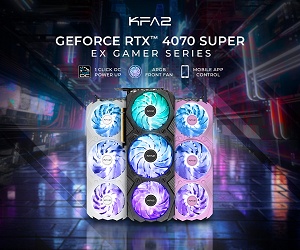


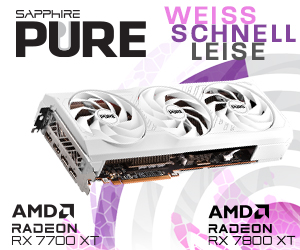




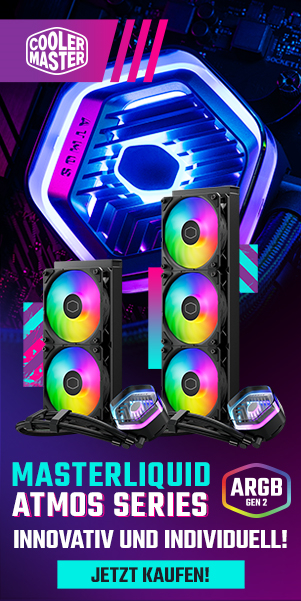


29 Antworten
Kommentar
Lade neue Kommentare
Veteran
Urgestein
1
1
Urgestein
Urgestein
1
Veteran
Veteran
Urgestein
1
1
Urgestein
Veteran
Veteran
Veteran
Urgestein
Mitglied
1
Alle Kommentare lesen unter igor´sLAB Community →